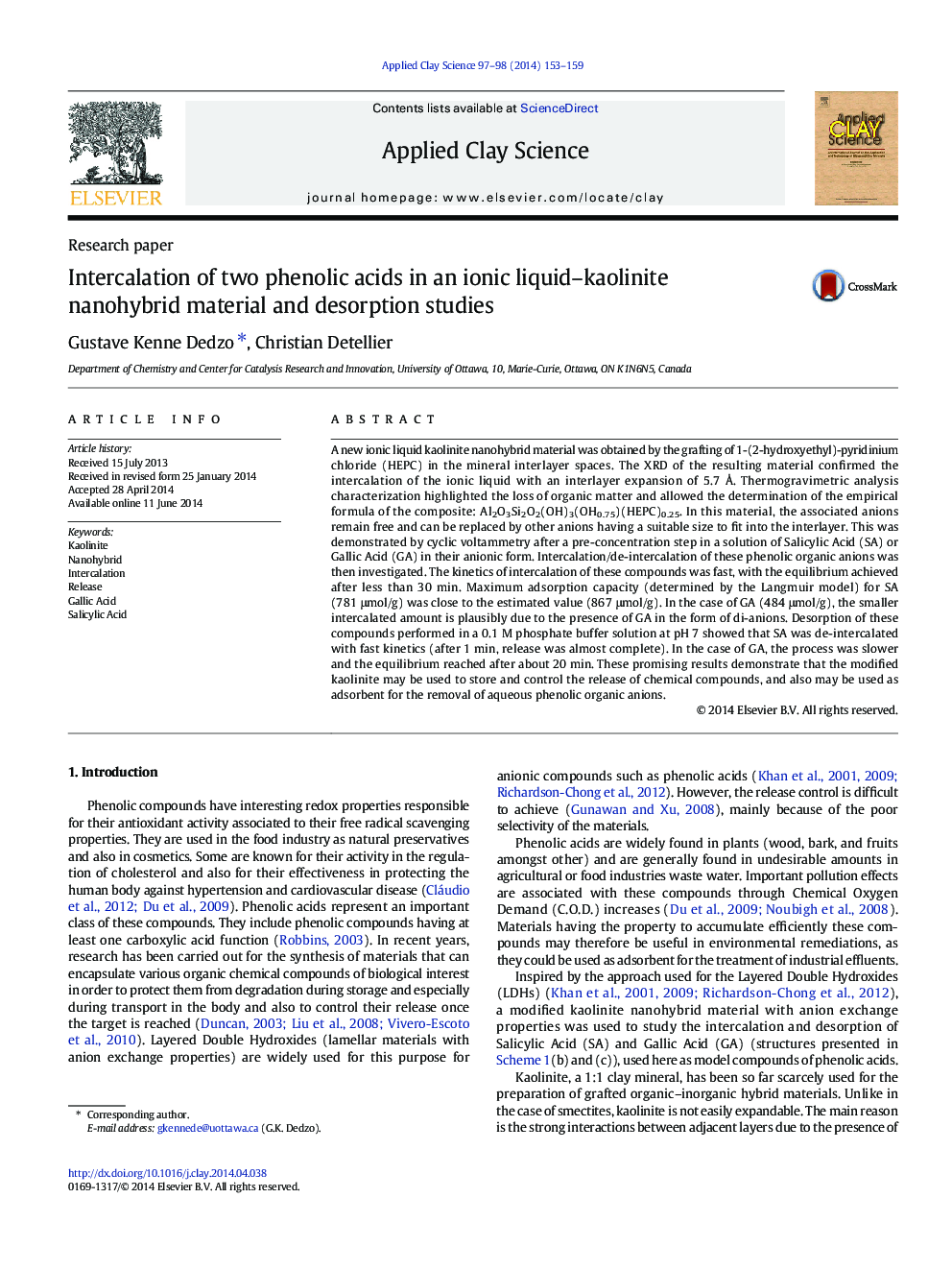| کد مقاله | کد نشریه | سال انتشار | مقاله انگلیسی | نسخه تمام متن |
|---|---|---|---|---|
| 1694668 | 1519080 | 2014 | 7 صفحه PDF | دانلود رایگان |
• First time grafting of pyridinium-based ionic liquid in kaolinite interlayer
• Quantitative adsorption of Gallic and Salicylic Acids by ion exchange mechanism
• Selective accumulation of di-anionic Gallic Acid
• Slow release enhanced by hydrogen-bond interactions with clay layers
A new ionic liquid kaolinite nanohybrid material was obtained by the grafting of 1-(2-hydroxyethyl)-pyridinium chloride (HEPC) in the mineral interlayer spaces. The XRD of the resulting material confirmed the intercalation of the ionic liquid with an interlayer expansion of 5.7 Å. Thermogravimetric analysis characterization highlighted the loss of organic matter and allowed the determination of the empirical formula of the composite: Al2O3Si2O2(OH)3(OH0.75)(HEPC)0.25. In this material, the associated anions remain free and can be replaced by other anions having a suitable size to fit into the interlayer. This was demonstrated by cyclic voltammetry after a pre-concentration step in a solution of Salicylic Acid (SA) or Gallic Acid (GA) in their anionic form. Intercalation/de-intercalation of these phenolic organic anions was then investigated. The kinetics of intercalation of these compounds was fast, with the equilibrium achieved after less than 30 min. Maximum adsorption capacity (determined by the Langmuir model) for SA (781 μmol/g) was close to the estimated value (867 μmol/g). In the case of GA (484 μmol/g), the smaller intercalated amount is plausibly due to the presence of GA in the form of di-anions. Desorption of these compounds performed in a 0.1 M phosphate buffer solution at pH 7 showed that SA was de-intercalated with fast kinetics (after 1 min, release was almost complete). In the case of GA, the process was slower and the equilibrium reached after about 20 min. These promising results demonstrate that the modified kaolinite may be used to store and control the release of chemical compounds, and also may be used as adsorbent for the removal of aqueous phenolic organic anions.
Journal: Applied Clay Science - Volumes 97–98, August 2014, Pages 153–159
